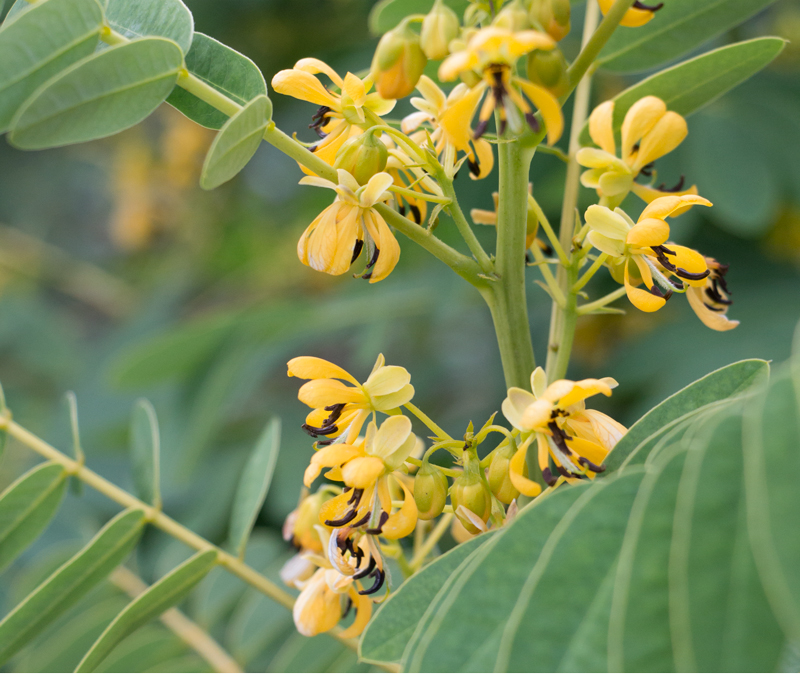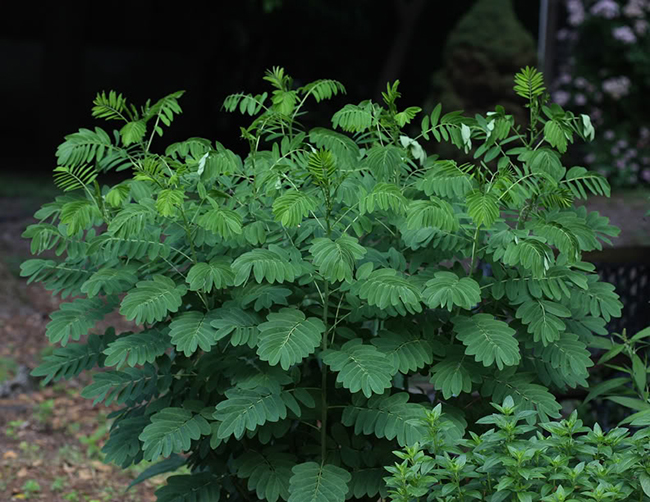This post is part of an ongoing series highlighting some of the best plants for pollinators from coast-to-coast. Drawing from our books 100 Plants to Feed the Bees, Gardening for Butterflies , and our Monarch Nectar Plant Guides.
Wild Senna
Senna marilandica, Senna hebecarpa
Wild senna is a large perennial with the distinctive foliage and conspicuous seed pods characteristic of members of the pea family. Unusual yellow flowers appear close to the stem and though they are only briefly in bloom, are visited by a number of pollinators including butterflies, solitary bees, and bumble bees. In regards to the last pollinator on that list, a 2016 study by researchers at Penn State found that bumble bees preferentially visit flowers that produce pollen that has higher protein-to-lipid ratios, and wild senna was the favorite of bumble bees amongst the plants used in the study.

Regarding the unusual flowers – not only do they look different, structurally – they are. As Mary Anne Borge of The Natural Web writes:
Wild Senna’s flowers have another somewhat unusual feature, or more accurately, they lack a feature, nectaries, that many flowers have. Many plant species have evolved to entice pollinators to their flowers by providing a reward of nectar in exchange for their visits. In spite of the lack of nectar, Wild Senna is pollinated by bees, primarily Bumble Bees but also Sweat Bees (Halictidspecies) who visit the flowers for their pollen, a highly nutritious food that contains protein, carbohydrates, fats, vitamins and minerals.
Which brings us to an interesting back-up strategy Wild Senna employs for protection. Wild Senna has extrafloral nectaries, a nectar source separate from the flowers. They are positioned on the leaf petioles (stems) near their attachment to the primary plant stem and adjacent to the flower buds.
Extrafloral nectaries are attractive to ants, parasitic wasps and lady beetles. It’s thought that these insects protect the plant from other insects that would attack the foliage. Indeed, the interplay of predator and prey interactions that play out in part because of these nectaries are worthy of Game of Thrones!
Wild senna is a larval host to cloudless sulphur (Phoebis sennae), orange-barred sulphur (Phoebis philea), and sleepy-orange butterflies (Abaeis nicippe). Birds enjoy the abundant seedpods and the plant serves as an important food-source for game birds such as quail.
This wildflower is underutilized in the home landscape. It mixes well as a backdrop to shorter perennials and adds structure to the wildflower garden. It makes an effective herbaceous hedge, and can withstand high winds that would wither other plants. Wild senna is considered threatened or endangered in the Northeastern U.S. – providing all the more reason to include it in your garden for the sake of its conservation.
Native Rage: Senna hebecarpa is native across the Northeastern U.S. from the Great Lakes as far south as Georgia. Senna marilandica has a broader range extending further west and south.
Best For: Supporting bumble bees, adding interest and structure to the garden, attracting beneficial insects for pest control.




